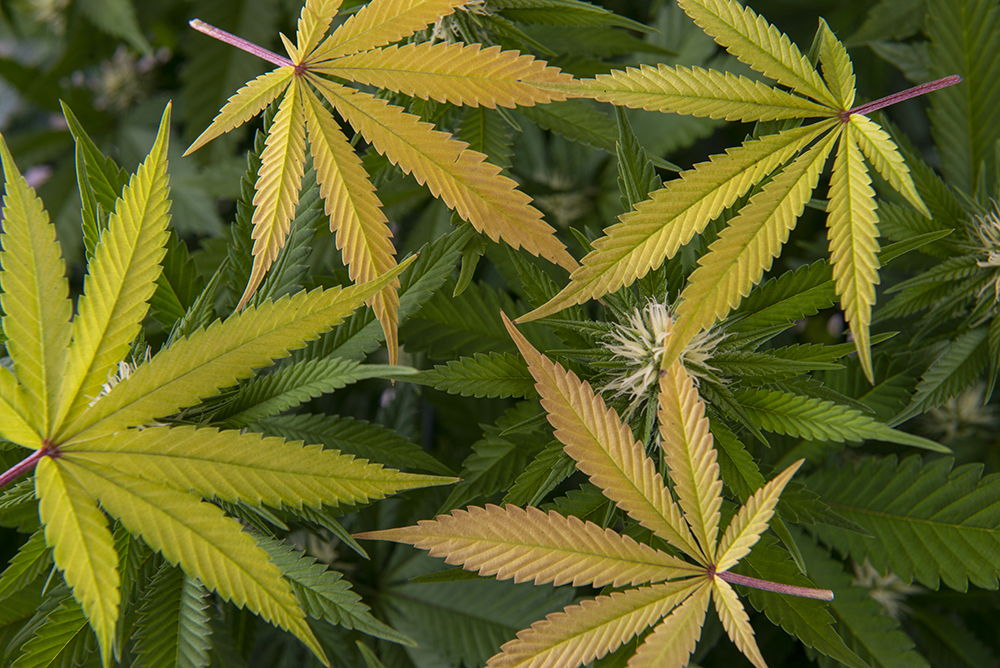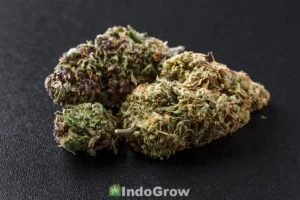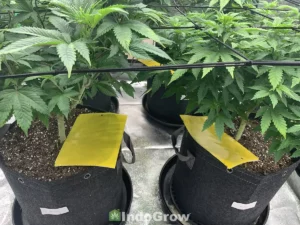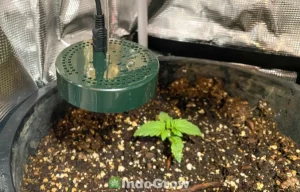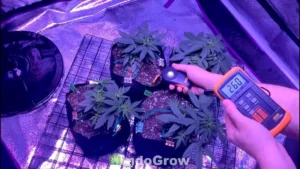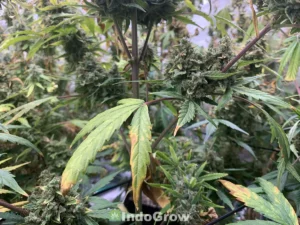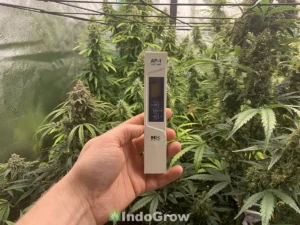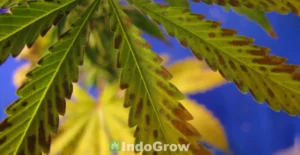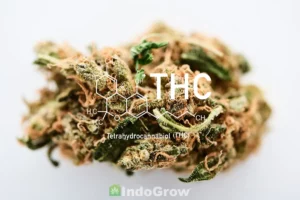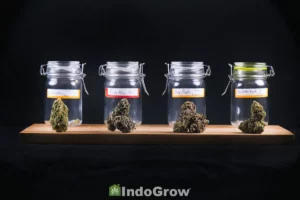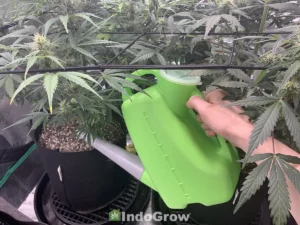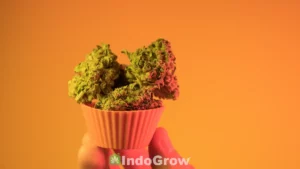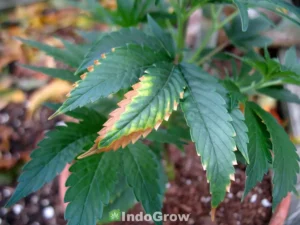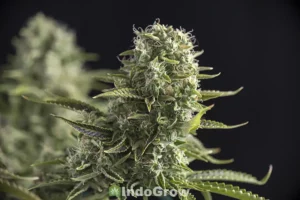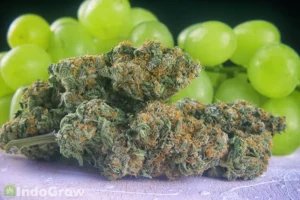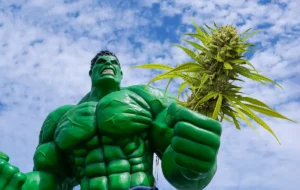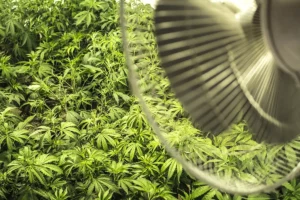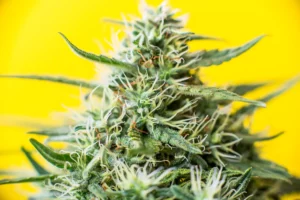Are your cannabis leaves yellowing? A variety of factors, including nutrition, Ph, heat, and pests can cause cannabis fan leaves to turn yellow. Correcting the environmental factors causing the plant’s leaves to turn yellow will usually solve this problem. However, in some cases yellowing leaves on your cannabis plant are natural and are not cause for concern. This article will list several possible reasons for yellowing fan leaves on your cannabis plant, as well as suggestions to correct the yellowing. With proper intervention, most causes of yellowing cannabis leaves can be corrected before they cause excessive damage to the plant.
Nutrient Deficiencies
Lack of certain essential nutrients like nitrogen, potassium, magnesium, or sulfur can be one cause of leaves turning yellow. However, adding too much fertilizer can also damage the plant and cause nutrient burn, which causes leaves to turn yellow or brown. Because of this, additional fertilizers should be introduced to the plant slowly and only after determining that lack of nutrients is the cause of your plants yellowing leaves. If too much fertilizer has been added, the growing medium should be flushed with pure water, and the fertilizer added back in at a half dose or less to start.
Nitrogen deficiency is the most common nutrient deficiency in cannabis plants. Yellowing starts with the lower leaves, which may also curl up or turn brown on the tips, while upper leaves remain unaffected. This is because the nitrogen deficient plant will strip nutrients from the lower canopy in order to keep the upper leaves healthy.
Potassium deficiency most commonly occurs during the flowering stage, as the production of flowers increases the amount of potassium the plant needs to consume. With a potassium deficiency, the outer part of the leaves will begin to turn yellow, while the center of the leaf will remain green.
Magnesium and sulfur are consumed in smaller quantities than nitrogen or potassium, but these nutrients are still essential to your plant’s growth. Magnesium deficiency usually presents as yellow striping along the veins of the leaves, and can eventually cause brown spots as well. Sulfur deficiency typically causes new growth to emerge with thin, pale yellow leaves.
Ph Imbalance
If your plant is displaying signs of nutrient deficiency despite being fertilized, this may be a sign that your plant has a Ph imbalance. A slightly acidic Ph is essential to your plant’s ability to uptake nutrients. For plants grown in soil, the Ph should be between 6.0 and 7.0. For plants grown in coco coir or hydroponic systems, Ph should be between 5.5 and 6.5, with a Ph of about 6.2 being ideal.
For hydroponics or other soilless systems, water Ph should be tested and adjusted with a Ph stabilizer before adding the water to the system. For plants grown in soil, a slurry test can be used to determine the current Ph. For this test, a small amount of soil is mixed with distilled water and stirred. After 15-30 minutes, the mixture should be stirred again and tested using a Ph test stick. While plants in soil are more forgiving of Ph changes, the soil Ph should still be somewhere between 6.0 and 7.0.
Watering Problems
Underwatering, overwatering, and inconsistent watering can all cause damage to your cannabis plant over time.
Overwatering is the most common problem of these three, although overwatered plants usually appear swollen and green instead of yellow. If the plant is chronically overwatered and its soil is never given a chance to dry out between waterings, the plant may begin to yellow and even develop root rot. This condition damages the plant and can cause leaves to turn yellow, droop, and fall off. Plants in later stages of root rot may not be saveable, but plants just beginning to show signs of rot may be saved by decreasing watering frequency and increasing oxygen to the roots.
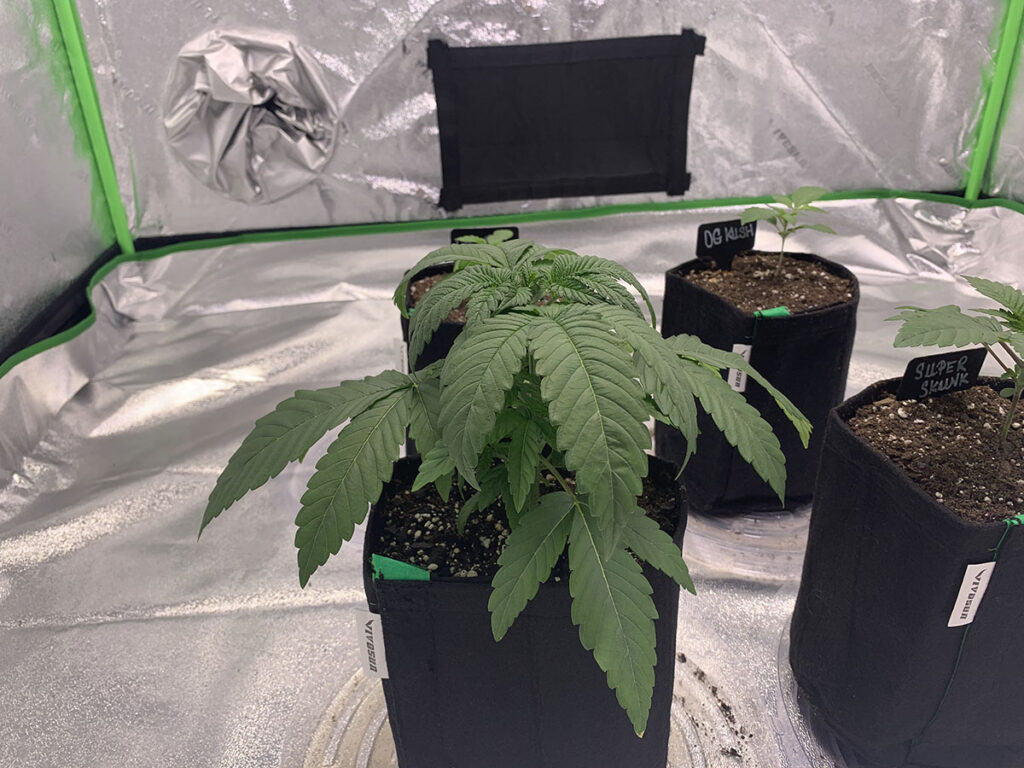
Underwatering and inconsistent watering can both cause leaves to turn yellow and eventually become brittle and brown. Adequate water is essential for plant growth and prolonged periods of excessive dryness can cause irreversible damage. Not only will the leaves suffer, but the roots can become less efficient at taking up water when they do receive it.
Plants should be watered until the first sign of runoff to ensure that the soil is saturated. Do not water again until the first two inches of soil in the top of the pot are dry, usually after 3-5 days. This can be tested by sticking your finger or a popsicle stick into the soil. Wet soil will cling to your finger, while dry soil will fall away easily.
Heat or Light Burn
Plants which are too close to their light source may experience heat or light burn. Leaves closest to the light will start to turn yellow with brown, crispy tips. To combat this, lights should be moved upwards as the plant grows to keep at least 18-24 inches of space between the top of the plant and the light source. If putting your hand between the light and the top of the plant for more than a few seconds is uncomfortable or painful, your plant is likely too close to the light.
If you have run out of space to move your light upwards, additional ventilation can be added to reduce heat. Aiming a fan at the upper canopy or adding a small AC unit or swamp cooler to the tent can help reduce heat. Plants should not be exposed to temperatures over 80F for extended periods of time. Besides the potential to burn the leaves, plants kept in overly hot rooms may dry out faster and turn yellow due to lack of moisture.
Bugs, Pests and Diseases
Cannabis leaves yellowing caused by pests is usually accompanied by other signs of infestation such as bite marks or webbing. Fungal infections can also cause unusual yellow and brown markings on the leaves of your plant.
An aphid infestation may be marked by yellowing leaves, small bite marks in the leaves, and sticky sap, or “honeydew” accumulating on the leaves. Aphids are smaller than a grain of rice, but careful inspection of the back of the leaves may turn up live aphids. The aphids can be transparent or dark colored, and may or may not have wings. Over time, these insects can damage the plant and make it more susceptible to fungal or viral infections.
Another common pest on cannabis plants are spider mites. Besides wilting, yellowing leaves, these mites spin webs which may be visible in between serrated edges of leaves, or at the junction of two stems. They may also cause small white spots to appear on the leaf where they have fed on its chlorophyll. Both aphids and spider mites can be controlled through applying natural or chemical pesticides, or releasing predatory insects.
Leaf Septoria is a fungal infection which can cause brown mottled damage on both the top and bottom of the plant’s leaves. The leaves themselves will turn yellow and eventually die off. After removing infected leaves, increasing air circulation and checking that humidity is not above 60% can help keep the infection from returning. Ensure that you add water only to the soil of the plants, and do not pour it over the leaves. If these steps do not remove the infection, try using a fungicide like neem oil on the leaves.
Besides those listed here, cannabis plants are susceptible to many other pests and diseases including powdery mildew, bud rot, fusarium root rot, and more. While these diseases often have other major symptoms, they can all cause leaf yellowing from the stress that they put on the cannabis plant. Keeping your plant at an appropriate humidity and temperature level, using adequate ventilation, and watering when soil is partially but not entirely dry are good preventative measures to keep your plant from becoming infected.
Normal Yellowing
Sometimes, yellowing cannabis leaves are a normal part of the plant’s life cycle. As the plant grows larger, some of the leaves at the very bottom of the plant may turn yellow and fall off. If these leaves are completely overshadowed by leaves higher up on the plant, they cannot photosynthesize and are no longer serving a purpose for the plant. This type of yellowing is more prevalent in plants that have not been trained to grow in a more efficient manner, such as LST.
Because Cannabis is an annual plant, it may begin to turn yellow around harvest time. The plant is putting all its energy into flowering, and will sacrifice its leaves to do so if it cannot maintain both green leaves and flowers. If the plant will be harvested soon after this occurs, this is not a major concern. Make sure to continue providing good growing conditions to your plant all the way up to harvest, so that the plant does not lose its leaves prematurely.
Summary
Yellowing leaves on a cannabis plant may be caused by too much or too little fertilizer, a Ph imbalance in your water or soil, excessive heat or light, or the presence of pests or diseases like aphids, spider mites, or leaf septoria. In an otherwise healthy plant, some older fan leaves in the lower canopy may turn yellow and fall off if they are no longer needed. Identifying what exactly has caused the yellow leaves is an essential first step to correcting the problem. Testing Ph, humidity, and temperature regularly are good preventative measures to stop leaf yellowing before it begins. Using an appropriate amount of fertilizer, and regularly checking for signs of pests and disease are other good ways to keep your plants healthy.

Rocky Horton
Author
Rocky Horton is an experienced cannabis grower and the founder of IndoGrow. The IndoGrow editorial team has over four decades of combined growing experience. Learn more.

